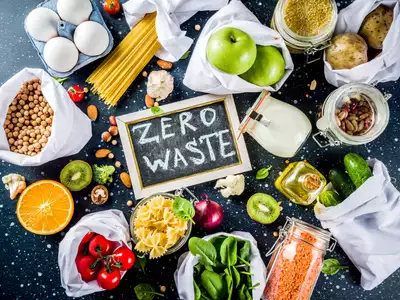Zero-Waste Cuisine: Reviving Tradition in the Modern Kitchen
Introduction
In a world grappling with environmental and sustainability issues, the concept of zero waste takes centre stage, influencing many aspects of our lives, including how we prepare and consume food. Zero-waste cooking is more than just a trend. It’s a conscious approach to getting the most out of every bite of food while minimising waste. In this article, we delve deeper into zero-waste cooking techniques, exploring their benefits, practical tips, and how they contribute to a greener planet.
The Impact of Food Waste
Food waste is a serious global problem with far-reaching implications. According to the United Nations Food and Agriculture Organization (FAO), about one-third of the food produced for human consumption is lost or wasted, amounting to about 1.3 billion tonnes annually. These losses not only deplete natural resources, but also contribute to greenhouse gas emissions and climate change. By adopting zero-waste cooking practices, people can play a key role in mitigating this impact.
Cook without waste
- Careful meal planning : Your journey to zero-waste cooking begins with thoughtful meal planning. Plan your meals based on what you have in your pantry and fridge. Before you go to the store, do an inventory to avoid unnecessary purchases. Use whole vegetables: Many vegetables can be eaten from root to stem. Carrot tops can be cooked into pesto, broccoli stems can be sliced and stir-fried, and potato skins can be cooked into a crunchy snack. Get creative with your recipes to make use of these commonly thrown away parts.
- Freezing leftovers and leftovers: Don’t throw away vegetable skins or leftover rice. Instead, freeze them for later use in soups, soups, and stews. Grass stalks and citrus peels can also be frozen to add flavour to future dishes.
- Composting : If zero-waste cooking aims to minimise waste, some parts such as onion skins, garlic skins and other non-edible waste may be unavoidable. Installing a composting system can turn this waste into nutrient-rich soil for your garden.
- Homemade soups and soups: Instead of buying ready-made soups, make delicious soups yourself using leftover vegetables such as onion skins, celery leaves, and carrot tips. This not only reduces waste, but also improves the taste of your meal.
- Preservation methods: Pickling, fermentation and canning are excellent ways to extend the shelf life of fruits and vegetables. By doing this, you will not only save money, but you will be able to enjoy the products of the middle of the year.
- Reuse stale bread: Don’t throw away stale bread. Turn it into croutons, bread crumbs, or a delicious bread pudding. Stale bread can add texture and flavour to a variety of dishes. Ample storage space. Proper storage can greatly extend the life of your product. Store food in airtight containers or beeswax bags to keep food fresh longer. Pay attention to the expiration date and choose the ones that are close to deterioration.
Benefits of Zero Waste Cooking
Taking a zero-waste approach to cooking is more than just reducing waste. It promotes a deeper connection with the food we eat, encourages creativity in the kitchen, and saves money. Reducing food waste reduces landfill demand and also contributes to reducing methane emissions from the decomposition of organic waste.
Conclusion
Zero-waste cooking is a powerful practice that allows people to have a positive impact on the environment by eating one meal at a time. By rethinking raw materials, using every part of food and applying conservation practices, we can significantly reduce our carbon footprint and contribute to a more sustainable future. As you embark on this culinary journey, remember that every small effort in the kitchen is a big step towards a greener planet.


